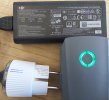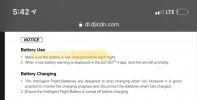DJI uses maximum energy content from the High Volt batteries, so that they fulfil the marketing hype for staying in the air as long as possible.
Batteries can end up as the most expensive item if you abuse them. Eventually, all rechargeable batteries are doomed to become problematic, the real question is "how can I keep the probability my batteries fail at a minimum".
Correct me if I am wrong, but the three main issues are temperature, and low and high voltages.
Low voltages are not (in my humble opinion) the real issue, as DJI does forced landings before this becomes a bad habit.
High temperature is an issue, which is indicative that the batteries internal resistance is too high (heat production = I²R). Trying to fly with low amps isn't really something that can be monitored. Heat is also produced at higher voltages in the final stage of charging the battery. Bad charging is, in my opinion, the main cause.
Lastly, high voltages is something that can be controlled, and it is rather easy. It does means sacrificing energy content because you will don't reach 100%, which is really just a number DJI has predefined for you. There are many studies showing that when batteries are charged up to high voltages, the life time is significantly lowered. Studies show that the high voltages break down at least one electrode, and cause lithium dendrite formation.
proposed solution:
Use a cheap smart plug to switches off the charger in the final charge phase, before higher voltages are reached. "highly volatile batteries" are avoided.
example:
I use the "Shelly Plug S" smart plug (about €20). It measures power usage and can be set to switch off or on under certain conditions. It is controlled via their app. There are many WiFi power monitor plugs, depending on your market.
The smart plug app tells me whilst charging Mavic 2 Pro battery, the charger plug draws a maximum of 65-70 Watts power. During the last 15% the charger throttles down the amperage and power (all modern charges do this, this is standard charging procedure).
I set my smart plug to "switch off" when it is 1 minute under 62W (a few Watts under the charge starting power). I also get a message on my smart phone, so I know exactly when the charge is completed. I reach about 85% capacity with this setting.
I have been doing this for about a year with my Mavic2Pro, and on other settings with a Mini 2. I am still flying with my original batteries.
Hope this helps. It will not work on a charger that charges multiple batteries at once, because the power is shared across the batteries.

Batteries can end up as the most expensive item if you abuse them. Eventually, all rechargeable batteries are doomed to become problematic, the real question is "how can I keep the probability my batteries fail at a minimum".
Correct me if I am wrong, but the three main issues are temperature, and low and high voltages.
Low voltages are not (in my humble opinion) the real issue, as DJI does forced landings before this becomes a bad habit.
High temperature is an issue, which is indicative that the batteries internal resistance is too high (heat production = I²R). Trying to fly with low amps isn't really something that can be monitored. Heat is also produced at higher voltages in the final stage of charging the battery. Bad charging is, in my opinion, the main cause.
Lastly, high voltages is something that can be controlled, and it is rather easy. It does means sacrificing energy content because you will don't reach 100%, which is really just a number DJI has predefined for you. There are many studies showing that when batteries are charged up to high voltages, the life time is significantly lowered. Studies show that the high voltages break down at least one electrode, and cause lithium dendrite formation.
proposed solution:
Use a cheap smart plug to switches off the charger in the final charge phase, before higher voltages are reached. "highly volatile batteries" are avoided.
example:
I use the "Shelly Plug S" smart plug (about €20). It measures power usage and can be set to switch off or on under certain conditions. It is controlled via their app. There are many WiFi power monitor plugs, depending on your market.
The smart plug app tells me whilst charging Mavic 2 Pro battery, the charger plug draws a maximum of 65-70 Watts power. During the last 15% the charger throttles down the amperage and power (all modern charges do this, this is standard charging procedure).
I set my smart plug to "switch off" when it is 1 minute under 62W (a few Watts under the charge starting power). I also get a message on my smart phone, so I know exactly when the charge is completed. I reach about 85% capacity with this setting.
I have been doing this for about a year with my Mavic2Pro, and on other settings with a Mini 2. I am still flying with my original batteries.
Hope this helps. It will not work on a charger that charges multiple batteries at once, because the power is shared across the batteries.













